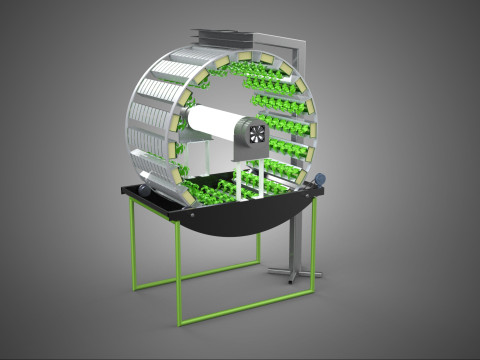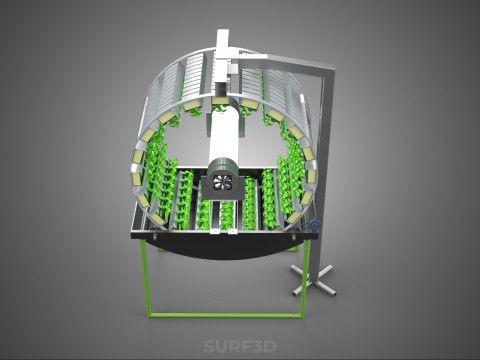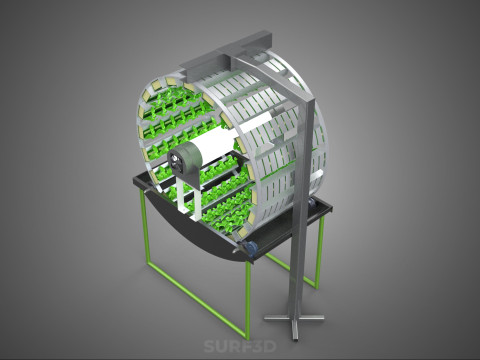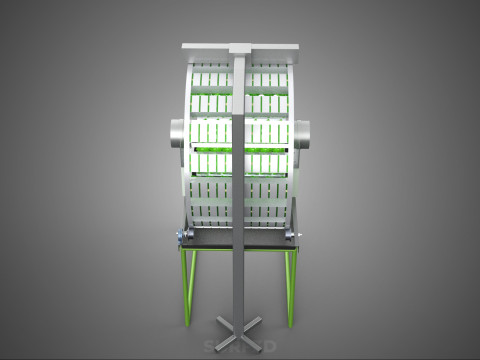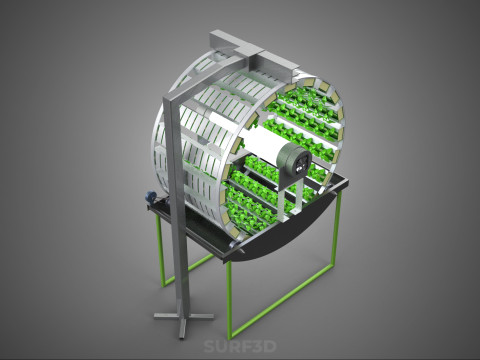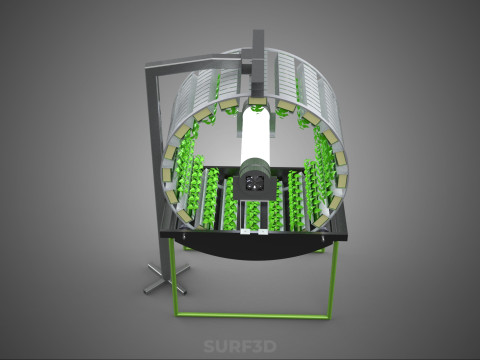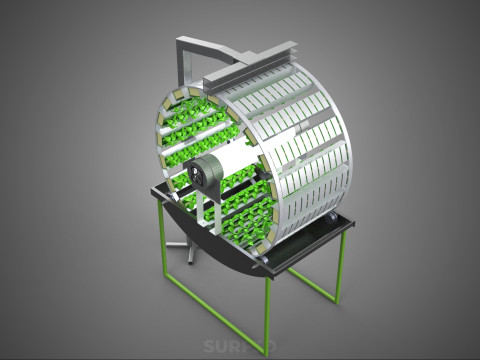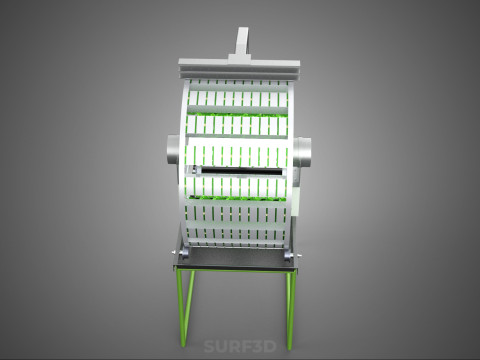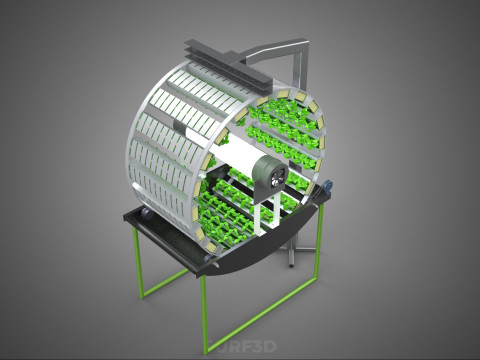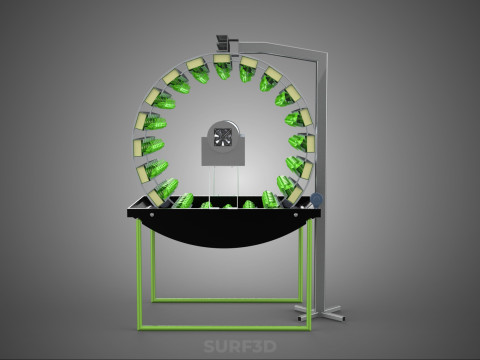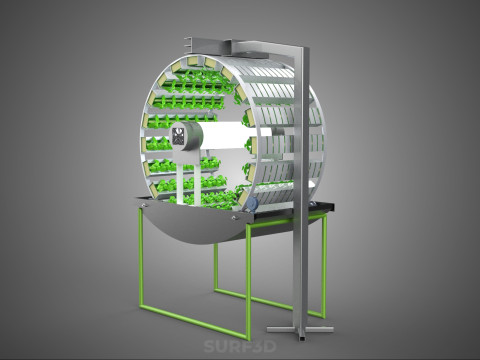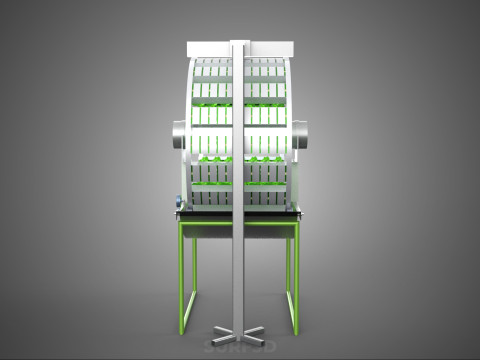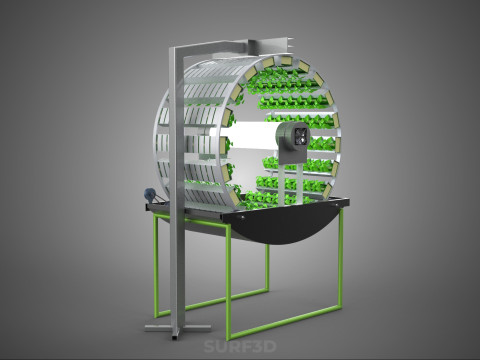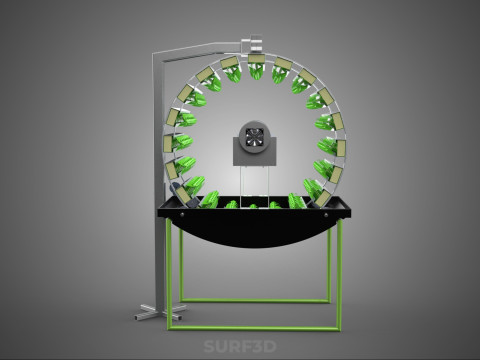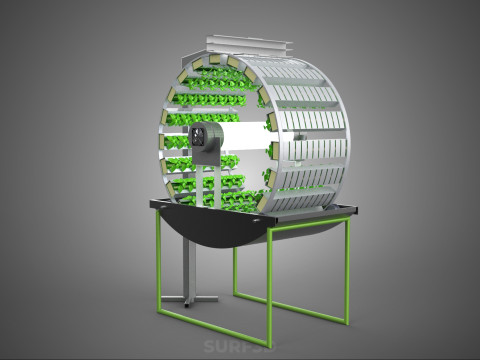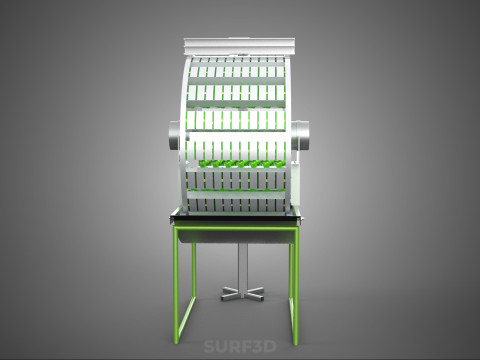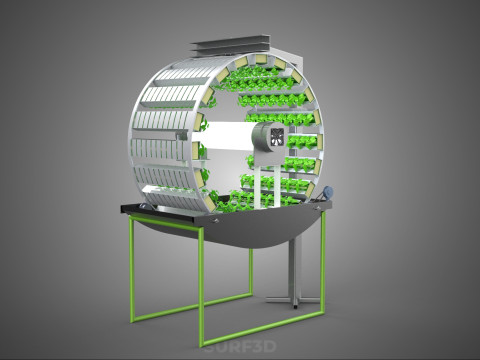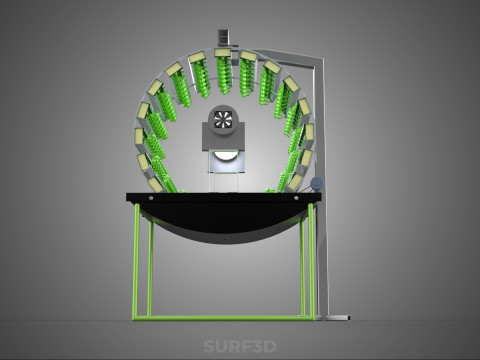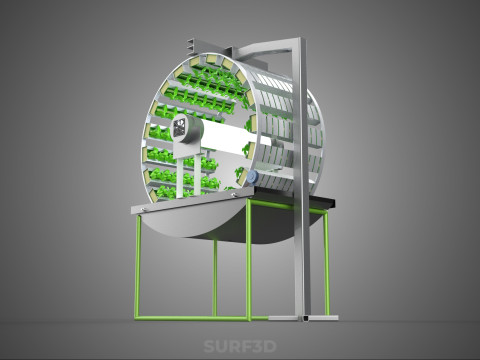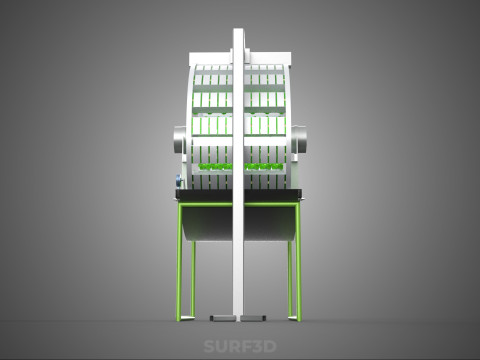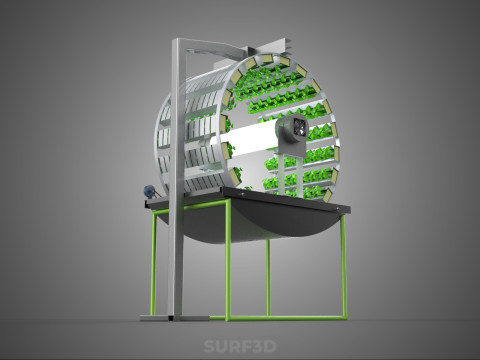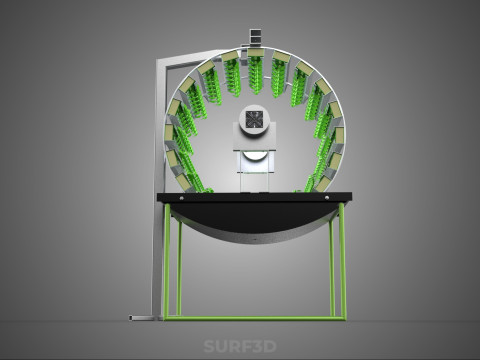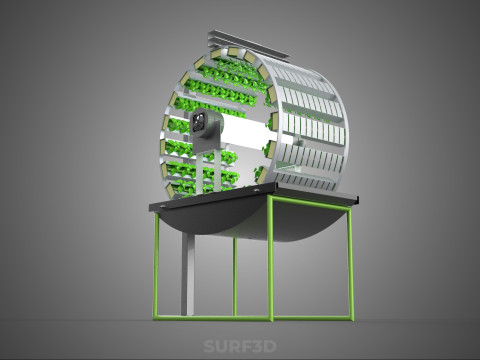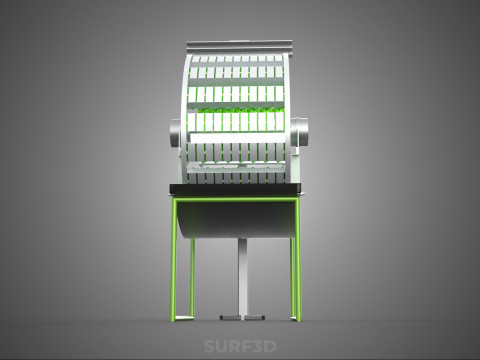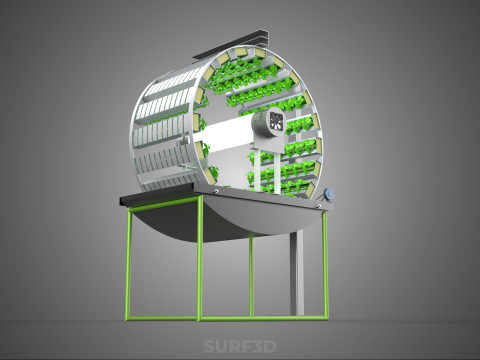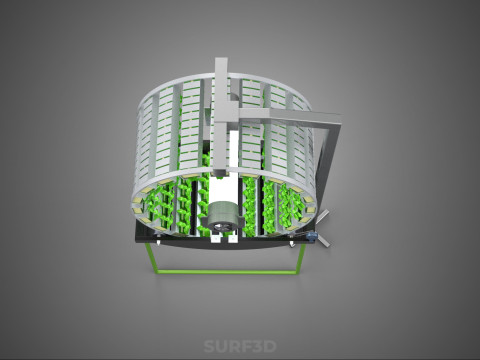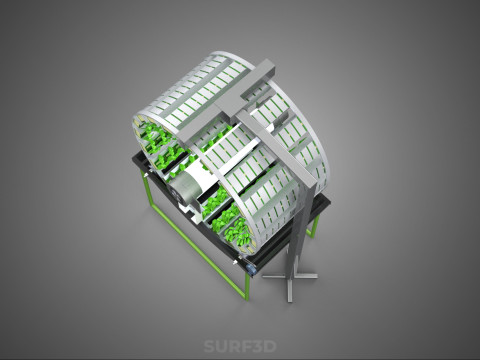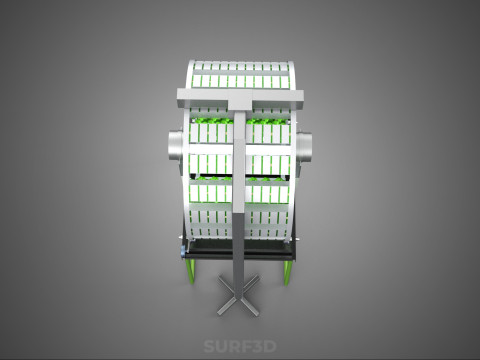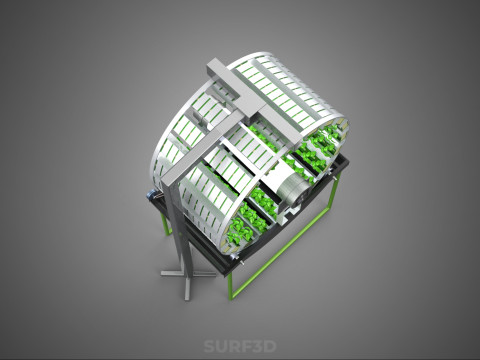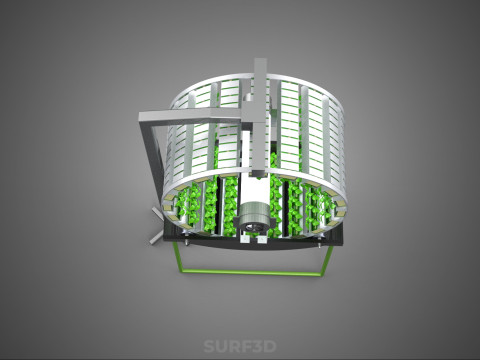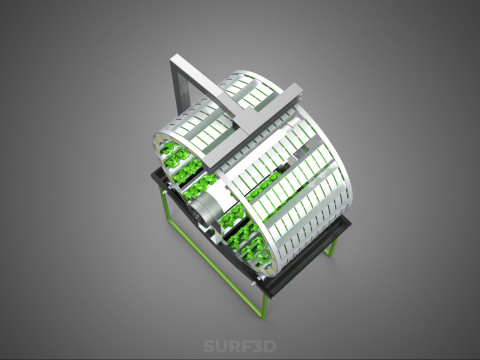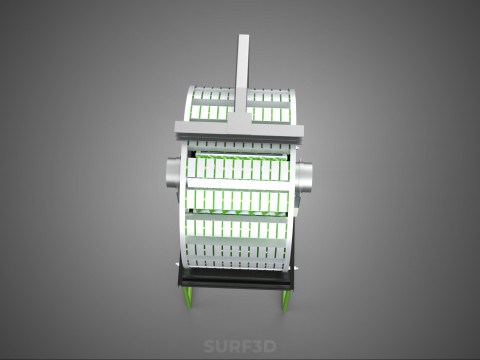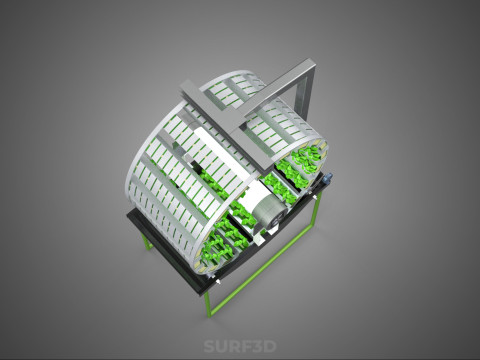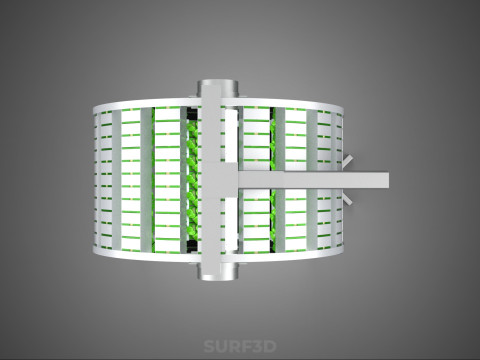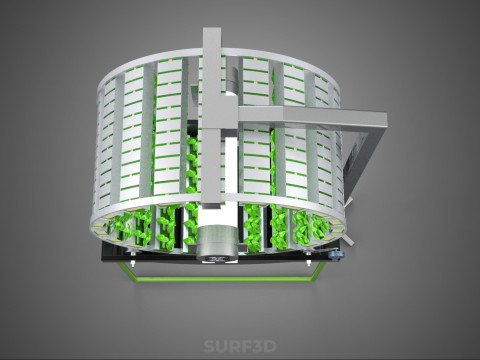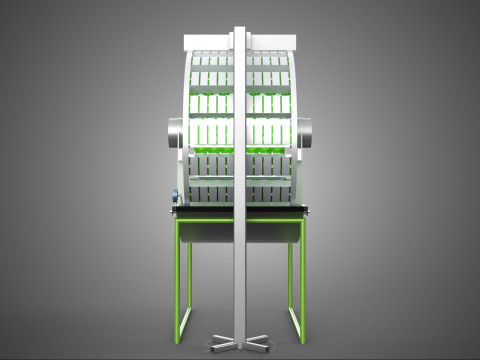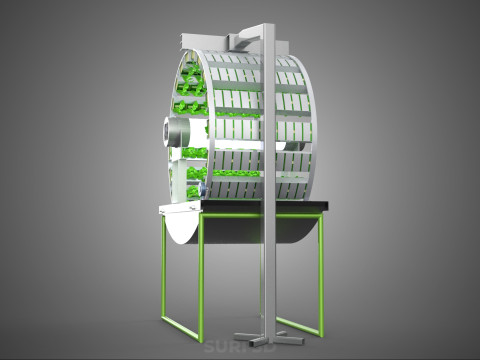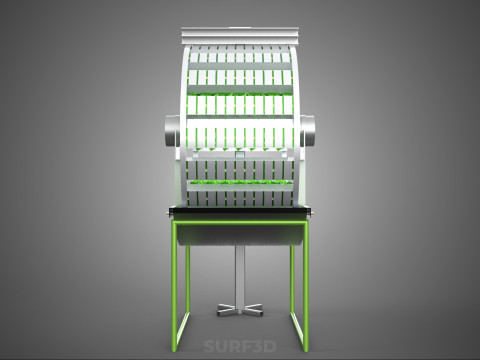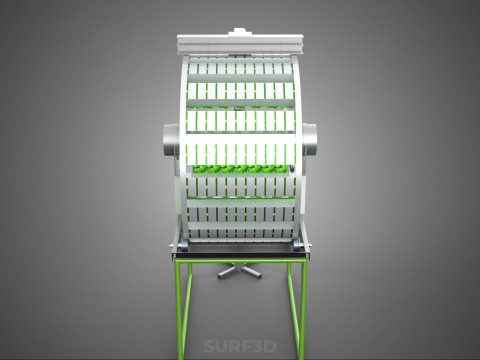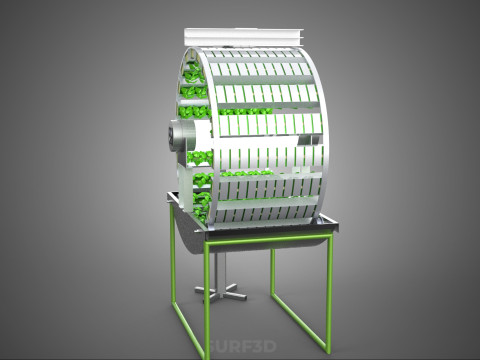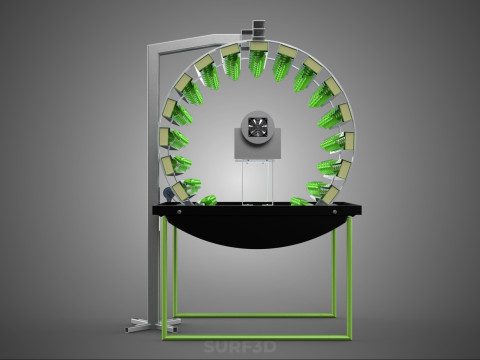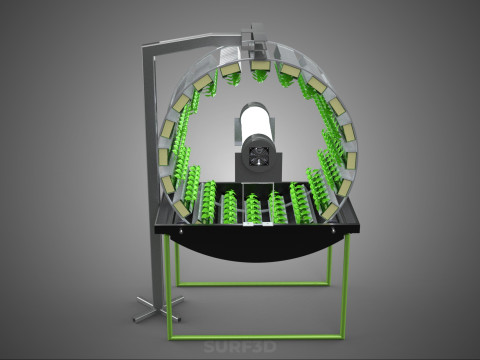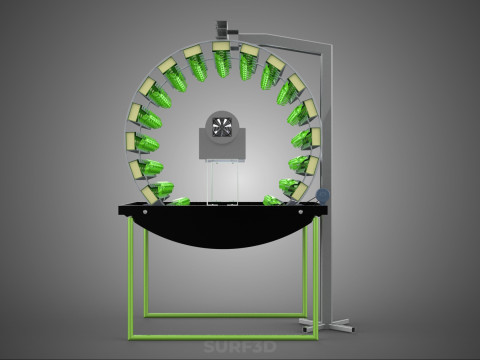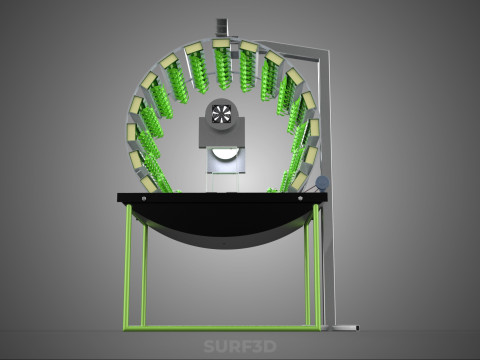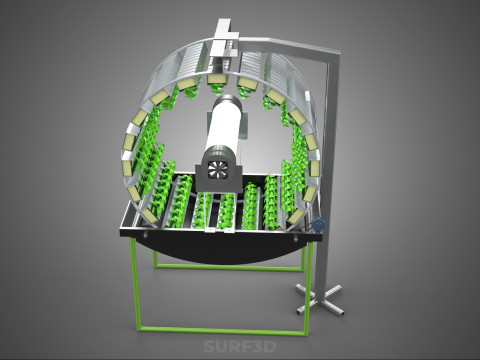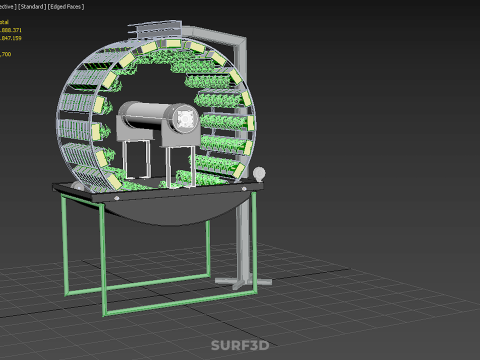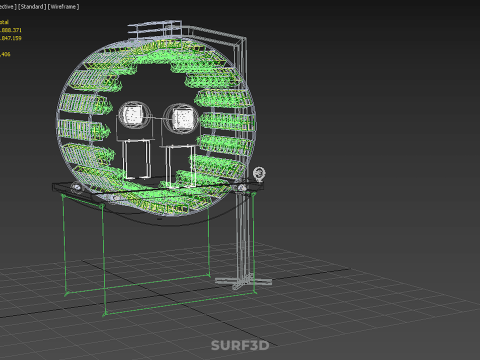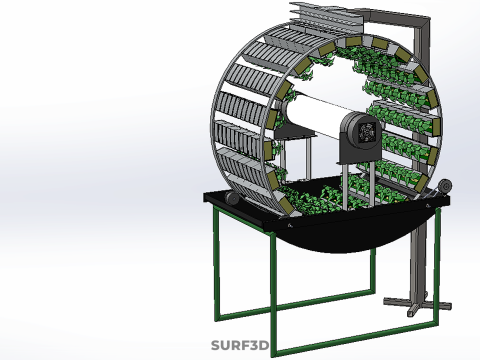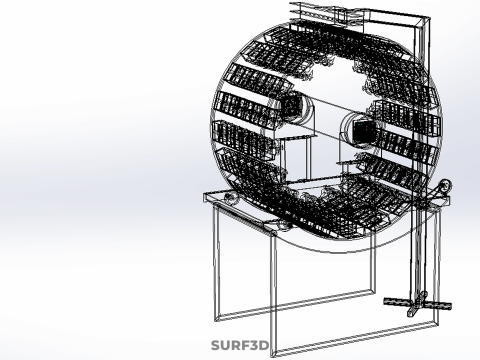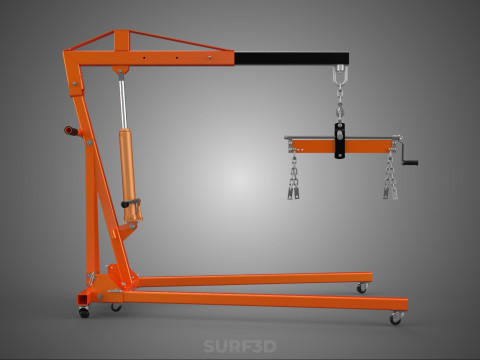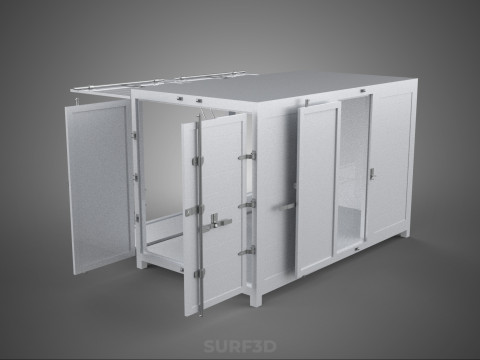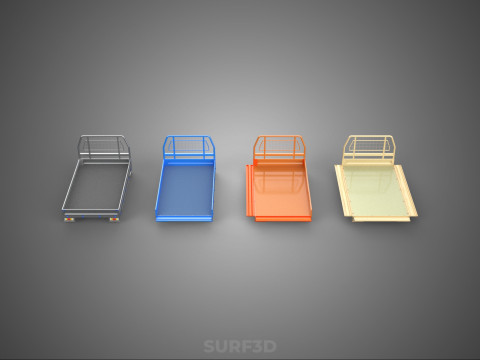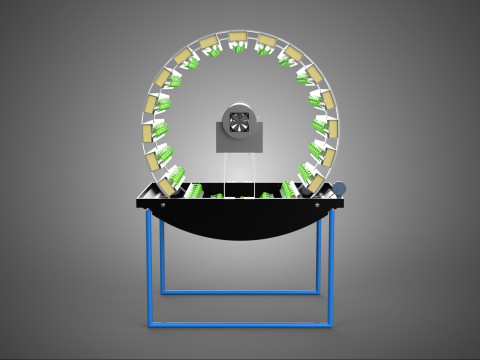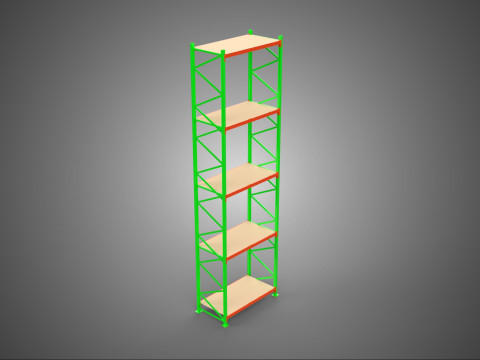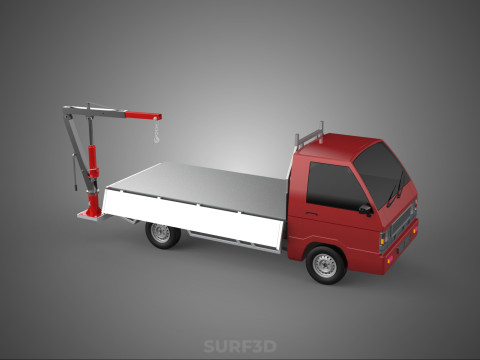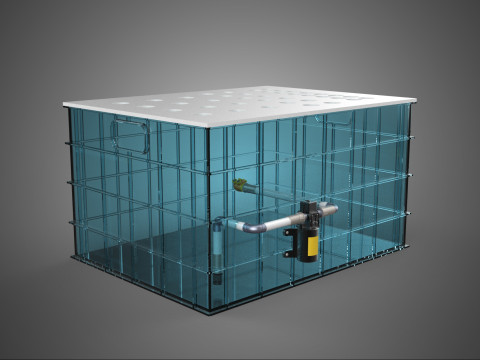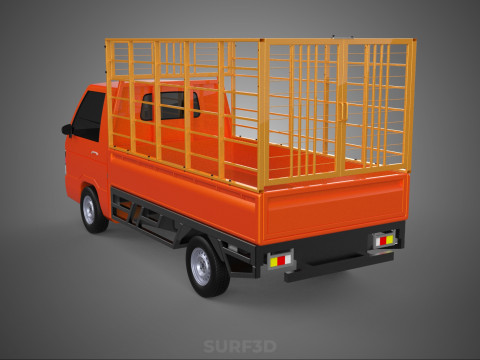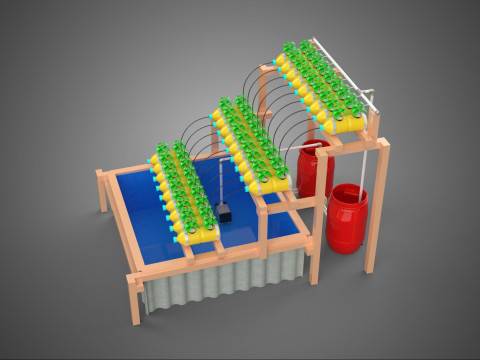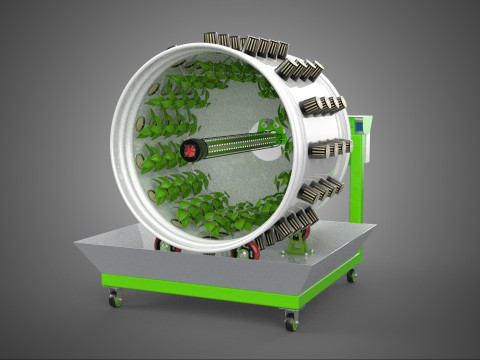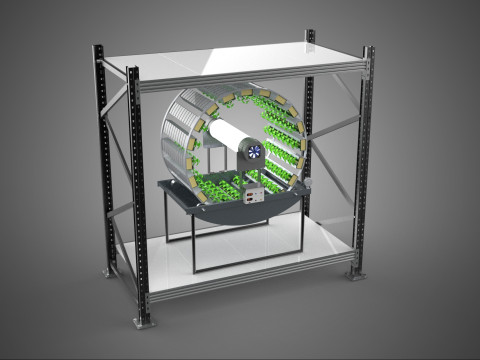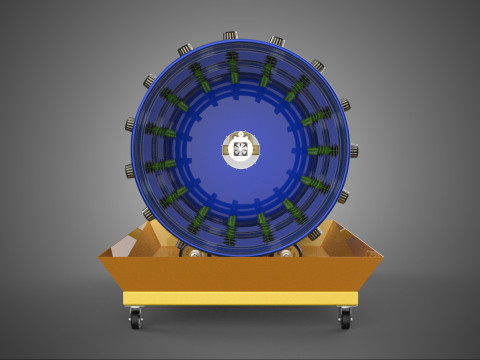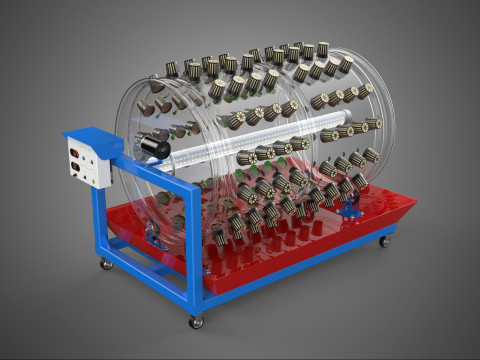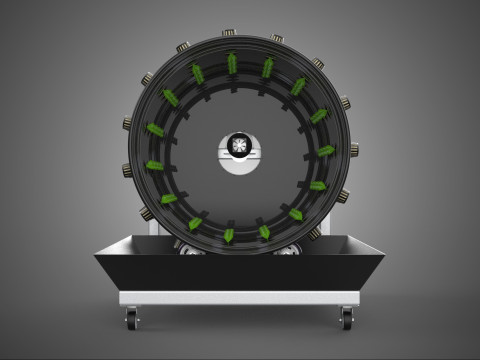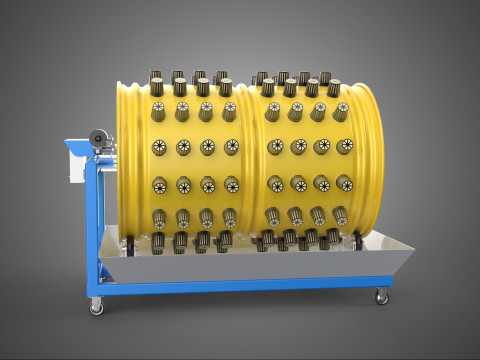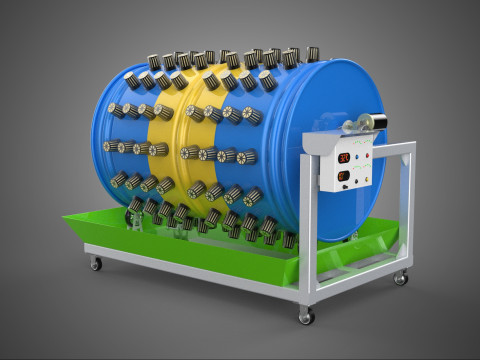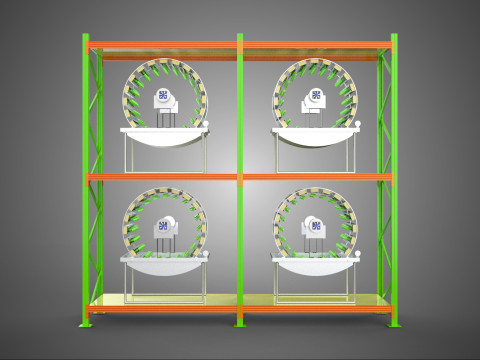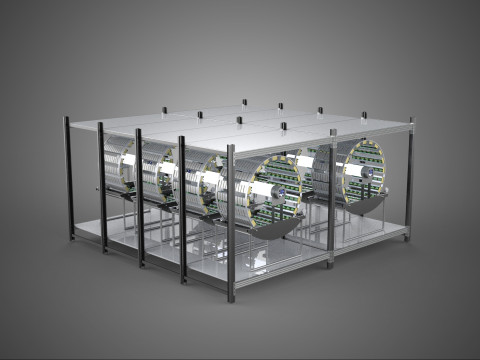RADIAL ROTARY HYDROPONIC SPIN GARDENING PLANT FARM SYSTEM WHEEL 3D Model
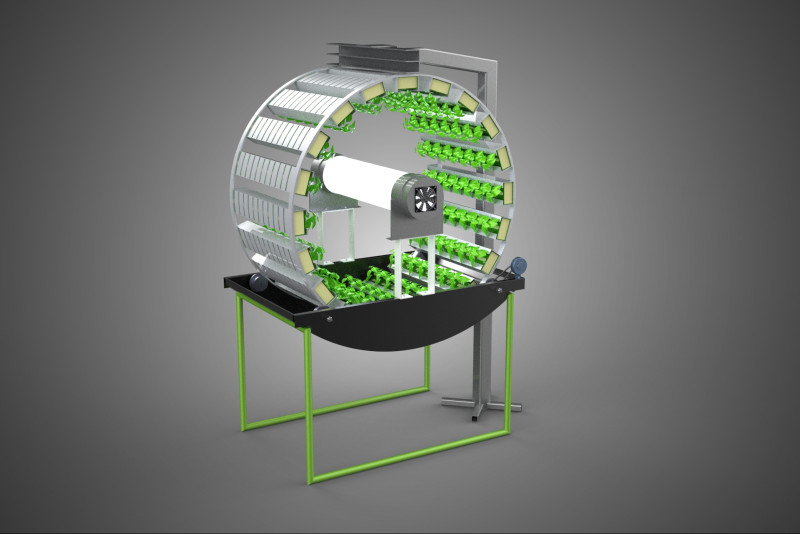
- Request product support by the author
- Available formats:
- Item ID:601960
- Date: 2025-09-27
- Polygons:2888371
- Vertices:1847159
- Animated:No
- Textured:No
- Rigged:No
- Materials:
- Low-poly:No
- Collection:No
- UVW mapping:No
- Plugins Used:No
- Print Ready:No
- 3D Scan:No
- Adult content:No
- PBR:No
- AI Training:No
- Geometry:Poly NURBS
- Unwrapped UVs:Unknown
- Views:229
Description
High-quality 3D assets at affordable prices — trusted by designers, engineers, and creators worldwide. Made with care to be versatile, accessible, and ready for your pipeline.
Included File Formats
This model is provided in 14 widely *******ed formats, ensuring maximum compatibility:
• - FBX (.fbx) – Standard format for most 3D software and pipelines
• - OBJ + MTL (.obj, .mtl) – Wavefront format, widely used and compatible
• - STL (.stl) – Exported mesh geometry; may be suitable for 3D printing with adjustments
• - STEP (.step, .stp) – CAD format using NURBS surfaces
• - IGES (.iges, .igs) – Common format for CAD/CAM and engineering workflows (NURBS)
• - SAT (.sat) – ACIS solid model format (NURBS)
• - DAE (.dae) – Collada format for 3D applications and animations
• - glTF (.glb) – Modern, lightweight format for web, AR, and real-time engines
• - 3DS (.3ds) – Legacy format with broad software *******
• - 3ds Max (.max) – Provided for 3ds Max users
• - Blender (.blend) – Provided for Blender users
• - SketchUp (.skp) – Compatible with all SketchUp versions
• - AutoCAD (.dwg) – Suitable for technical and architectural workflows
• - Rhino (.3dm) – Provided for Rhino users
Model Info
• - All files are checked and tested for integrity and correct content
• - Geometry uses real-world scale; model resolution varies depending on the product (high or low poly)
• • - Scene setup and mesh structure may vary depending on model complexity
• - Rendered using Luxion KeyShot
• - Affordable price with professional detailing
Buy with confidence. Quality and compatibility guaranteed.
If you have any questions about the file formats, feel free to send us a message — we're happy to assist you!
Sincerely,
SURF3D
Trusted source for professional and affordable 3D models.
More Information About 3D Model :
A Radial Rotary Hydroponic Spin Gardening Plant Farm System Wheel, frequently abbreviated as a rotary hydroponic system or vertical grow wheel, represents an advanced agricultural technology designed for highly efficient, soil-less cultivation of plants. This system integrates hydroponic growing principles with a unique, slowly rotating wheel-shaped structure, engineered to maximize space utilization, optimize resource consumption, and accelerate plant growth rates within controlled environmental conditions.
**Operating Principles:**
The fundamental principle behind a rotary hydroponic system involves the continuous, synchronized exposure of plants to light, nutrients, and air. Plants are typically anchored in net pots or grow cubes arranged radially around the central axis of a large wheel. This wheel undergoes slow, continuous rotation (e.g., one revolution every 30-60 minutes). As the wheel rotates, each plant site cycles through distinct zones:
1. **Nutrient Zone:** Plant roots periodically dip into, or are sprayed by, a precisely formulated aqueous nutrient solution, or a thin film of this solution coats the root surfaces as they pass through a nutrient-delivery trough. This ensures consistent hydration and nutrient uptake.
2. **Air Zone:** Between exposures to the nutrient solution, the roots are exposed to the ambient air, providing crucial oxygenation. This prevents waterlogging, a common issue in some hydroponic systems, and mitigates the risk of anaerobic root diseases.
3. **Light Zone:** A high-intensity artificial light source, commonly high-pressure sodium (HPS), metal halide (MH) lamps, or modern light-emitting diode (LED) arrays, is centrally positioned within the wheel or strategically arranged around its periphery. The rotation ensures that all plants receive uniform and consistent illumination over time, eliminating localized hot spots or shaded areas and promoting homogeneous growth and development across the entire crop.
The slow rotation also contributes to uniform air circulation around the plant canopy, aiding in temperature and humidity regulation.
**Key Components:**
A typical Radial Rotary Hydroponic System comprises several integrated components:
* **Rotary Wheel Structure:** The central framework, usually circular, designed to securely hold individual plant sites or grow chambers in a radial configuration.
* **Plant Sites/Pods:** Receptacles (e.g., net pots, rockwool cubes) where plants are rooted, allowing for easy root access to nutrient solutions.
* **Nutrient Reservoir:** A tank storing the meticulously balanced aqueous solution of essential macro and micronutrients.
* **Pump and Irrigation System:** A pump circulates the nutrient solution from the reservoir to the plant roots, often employing drip emitters, spray nozzles, or directly dipping the plant sites into the solution during rotation.
* **Light Source:** Artificial grow lights, as described above, critical for photosynthesis in indoor, soil-less environments.
* **Motor and Drive System:** An electric motor, coupled with a gear or belt system, provides the slow, controlled rotational movement of the wheel.
* **Environmental Control System:** Advanced sensors and controllers continuously monitor and regulate critical parameters such as air temperature, humidity, carbon dioxide (CO2) levels, pH, and electrical conductivity (EC) of the nutrient solution, creating an optimal microclimate for plant growth.
**Advantages:**
1. **Space Efficiency:** Maximizes the cultivation area within a minimal footprint, enabling high-density planting and making it ideal for urban farming and environments with limited space.
2. **Resource Optimization:** Achieves significant reductions in water consumption (up to 95% less than traditional agriculture) through recirculation and minimized evaporation. Nutrient solutions are also conserved.
3. **Accelerated Growth and Yield:** Consistent and optimized access to light, nutrients, and oxygen, coupled with precise environmental control, typically leads to faster growth cycles and higher yields per unit area.
4. **Pest and Disease Control:** The controlled, soil-less environment inherently reduces exposure to soil-borne pathogens, pests, and weeds, often minimizing the need for pesticides.
5. **Environmental Control:** Offers unparalleled precision in managing growth parameters, resulting in predictable harvests, consistent product quality, and year-round production irrespective of external climate.
6. **Reduced Labor:** Automation of nutrient delivery and environmental monitoring can significantly decrease manual labor requirements associated with traditional farming.
**Disadvantages and Challenges:**
1. **Initial Capital Investment:** The setup cost for a rotary hydroponic system can be substantial due to the specialized equipment, automated controls, and infrastructure.
2. **Energy Consumption:** Continuous operation of high-intensity lighting, motors, pumps, and environmental control systems can lead to significant electricity usage.
3. **Technical Complexity:** Requires a comprehensive understanding of hydroponics, plant physiology, electrical systems, and environmental control for effective operation and troubleshooting. System malfunctions can rapidly impact crop health.
4. **Maintenance:** Regular monitoring, calibration, cleaning, and replenishment of the system components, including nutrient solution adjustments and component checks, are essential for sustained performance.
**Applications:**
Radial rotary hydroponic systems find utility in diverse agricultural settings:
* **Commercial Agriculture:** Large-scale indoor farms specializing in high-value crops such as leafy greens, herbs, microgreens, and specific fruits like strawberries.
* **Urban and Peri-Urban Farming:** Addresses food security challenges in densely populated areas by enabling local, fresh produce cultivation.
* **Research and Development:** Employed in horticultural science for controlled experimentation on plant growth, nutrient dynamics, and optimized lighting regimes.
Need more formats?
If you need a different format, please send us a Conversion Request. We can convert 3D models to: .stl, .c4d, .obj, .fbx, .ma/.mb, .3ds, .3dm, .dxf/.dwg, .max. .blend, .skp, .glb. Free Format ConversionWe do not convert 3d scenes and solid formats such as .step, .iges, .stp, .sldprt etc!
Usage Information
RADIAL ROTARY HYDROPONIC SPIN GARDENING PLANT FARM SYSTEM WHEEL - You can use this royalty-free 3D model for both personal and commercial purposes in accordance with the Basic or Extended License.The Basic License covers most standard use cases, including digital advertisements, design and visualization projects, business social media accounts, native apps, web apps, video games, and physical or digital end products (both free and sold).
The Extended License includes all rights granted under the Basic License, with no usage limitations, and allows the 3D model to be used in unlimited commercial projects under Royalty-Free terms.
Read more


 English
English Español
Español Deutsch
Deutsch 日本語
日本語 Polska
Polska Français
Français 中國
中國 한국의
한국의 Українська
Українська Italiano
Italiano Nederlands
Nederlands Türkçe
Türkçe Português
Português Bahasa Indonesia
Bahasa Indonesia Русский
Русский हिंदी
हिंदी